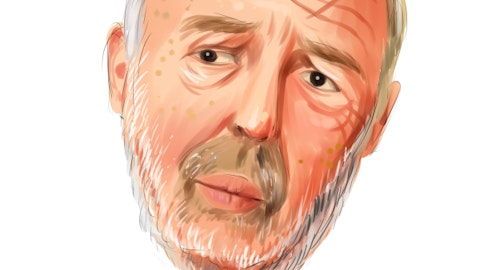Operator: Your next question comes from the line of Ahu Demir of Ladenburg.
Ahu Demir: Thank you so much for the information you provided today. I have 3 questions. The first one is, what do we expect from the top line data? Do you plan to disclose a subset of patients, such as post-BCMA similar to what you have shown previously?
Andrei Shustov: Thank you for this question. I will try to take this one. So I assume that the question pertains to our pivotal trial. As I’ve stated in our clinical trial design, and we discussed today, we plan on disclosing top line data related to primary and secondary objectives of the study, including major response rate, overall response and the rate of complete remissions.
James Caruso: The second part was related to multiple myeloma?
Ahu Demir: Yes, that is correct, Jim. I was asking about the post-BCMA patients.
Andrei Shustov: Yes. So switching back to multiple myeloma. So first, we recently published results in few patients right after previous ASH on both BCMA-treated patients with very encouraging results in terms of response and duration of response for this population. As I stated a bit earlier, our current direction in this clinical development program is to enrich these and other highly refractory populations. And once the enrichment is complete from a statistical perspective, we would certainly be analyzing the subgroups of patients and the type of data will be similar to what we are planning to report in pivotal study and pertain to response rates and duration of response for this difficult population.
Ahu Demir: My second question is what are the plans for ex U.S. commercial efforts? Do you intend to file in Europe? Are you going to wait for the confirmative study? Are you also looking into partnerships for ex U.S. opportunities?
James Caruso: That’s a great question. One, I will direct you to our receipt or we were awarded the PRIME designation, which, as you know, is very difficult especially over the last handful of years, more and more challenging to receive that from the EU. That helps us on multiple levels. Obviously, it increases our dialogue considerably with the authorities — the regulatory authorities. And there’s a level of high commitment to help expedite or accelerate products like this that they deem solve an unmet clinical need or an underserved population and that the drug itself provides a meaningful improvement over existing agents. I will say they’re very thorough in terms of their assessment and they would look at all elements, both preclinical as well as clinical data.
I believe it’s fair to say that they reviewed the first 6 patients as well as those patients participating in our clinical trial as part of the interim assessment that we had built in along with the FDA. So their level of diligence is very, very deep. And today’s environment is, quite frankly, more challenging than breakthrough designation in the U.S. So that will help us or others in terms of advancing Iopofosine I-131 through the regulatory pathway in the EU. Obviously, we have the capacity because of the scalable nature in the U.S. of this disease. As Shane highlighted earlier, highly concentrated, a handful of community-based integrated delivery systems, maintaining control and oversight and patient management of a considerable number of the total population in the U.S., and then obviously, those academic centers that are considered centers of excellence to treat this patient population.
And there’s really no large multinational pharmaceutical machinery in the WM space as well. So it’s pretty wide open for us, and that’s where a highly efficient, cost-effective, highly targeted commercial marketing effort allows us to compete and win there with resources, pennies on the dollar, relative to some of these other spaces that are highly competitive and where there’s a number of available treatment options that are being supported by large multinational pharmaceutical companies. The difference in Europe is we do not obviously have the capacity to successfully promote there as a stand-alone. I will tell you that there is obviously one of the pathways that we would consider as a primary approach to ex U.S. commercialization is through partnership, obviously, based on the first 6 patient data, ongoing discussions, and there’s a high degree of interest from third parties to take on that commercial marketing leadership role for us ex U.S.





